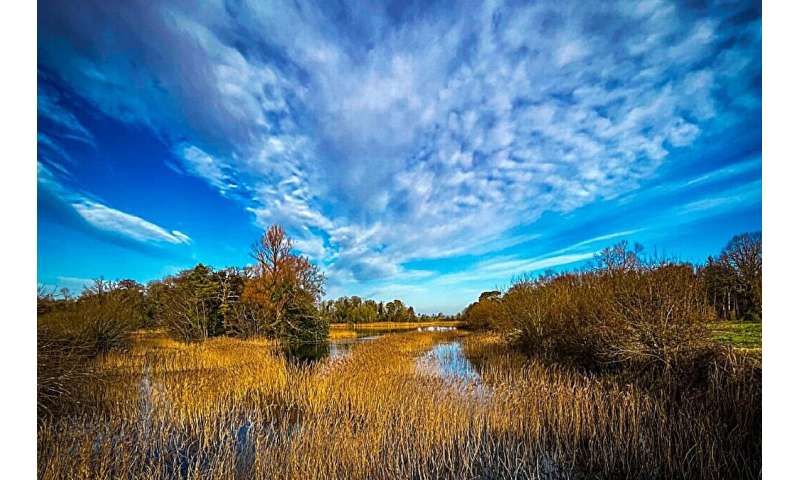Study highlights the low environmental impact of small farms in Ireland

A new Teagasc study investigates the economic, environmental and social sustainability of small farms, using data collected through the Teagasc National Farm Survey (NFS) in Ireland. While these small farms mainly produce cattle or sheep, there is also a third category of small farms where leasing out much of the farm is a revenue source.
While there are more than 135,000 farms in Ireland, more than 48,000 of these farms are classified as being particularly small in economic terms. These small farms occupy about 15% of the agricultural land area in Ireland. The average small farm has an area of about 13 hectares, with a typical herd size of about five suckler cows or 20 ewes. These small farms are not included in the annual Teagasc National Farm Survey, but are surveyed every five years instead.
In terms of economic performance, the results of the study confirm the very low levels of income earned on small farms, reflecting their low level of output per hectare and their high fixed costs of production relative to their size. In 2022, the average family farm income (FFI) on small cattle and sheep farms was just €2,638, compared to an average FFI for the rest of the cattle and sheep farm population of €15,082.
While farming related income on small farms is particularly low, the study finds that more than 80% of small farm households also have non-farm income sources, either through off-farm employment or through a pension.
While small farms are not particularly significant in economic terms, due to their very extensive nature (low stocking rate) they differ from the rest of the farm population in terms of their environmental sustainability and contribution to biodiversity.
The low level of chemical fertilizer use on small farms is reflected in lower nitrogen and phosphorus balances compared to the rest of the farm population. The low stocking rate on these farms also means that they have very low levels of Greenhouse gas (GHG) emissions, with just 4% (less than 1 million metric tons of CO2 equivalent) of the GHG emissions produced by Irish agriculture originating from these 48,000 small farms.
However, while the low level of GHG emissions from these small farms is notable, the level of output from these farms is also low. Taking these factors into account, the study finds that small farms produce more GHG per kg of meat than is the case for the rest of the cattle and sheep farm population. This means that even though they produce very little GHG emissions in total, small farms are less GHG emissions efficient than the rest of the farm population.
Due to their extremely extensive nature and minimal use of grassland management, small farms are likely to be an important repository for biodiversity, with ongoing Teagasc research developing ways of assessing their role in maintaining natural habitats.
In terms of the social dimension, the study indicates that the age profile of small farm households is slightly higher than that of the rest of the farming population, with the average farmer aged 60 years.
The survey found that the main farm operator on small farms has been in place for more than 20 years on about 60% of small farms. Almost 8 in 10 small farm households have access to the internet, with 7 in 10 farm operators using a smartphone. About 50% of small farm operators make use of either their smartphone or the internet for some farming related purpose.
Looking ahead, given the large number of small farms in Ireland, the future intentions of small farm operators and the potential future trajectory of small farms is of real interest, since it may have implications for the overall sustainability of Irish agriculture.
The study reveals that over the next five years, more than one-third (35%) of small farm operators intend to continue farming as is, with a further 27% intending to lease out their land. A further one-fifth expect to have changed farm system, or to have scaled back their farming activity, while the remainder expect to be farming with a successor, or to have scaled up their farming activity to some extent.
In the context of generational renewal, the study finds that a farm successor has been identified on more than half (56%) of the farms in the small farm population. The survey also finds that about half of current small farm operators would expect to transfer the farm to the successor in the next five to 10 years. Somewhat surprisingly, close to half of small farm operators did not expect the emerging potential of remote working to lead to an increase in the likelihood of farm succession.
Among those who plan to continue to farm, more than 50% were interested in switching from a conventional system to organics, with 40% interested in further involvement in agri-environmental schemes.
For the purposes of the study small farms are defined by the amount of output they produce rather than their farm area. Farms with a standard output of €8,000 or less were identified for inclusion in the study.
More information:
National Farm Survey Small Farms Report 2022. www.teagasc.ie/media/website/p … farms_Report2022.pdf
Provided by Teagasc